What to Know
Shih Tzus are a beloved breed known for their small size, adorable looks, and friendly temperament. One of the most interesting aspects of these dogs is the variety of colors they come in. From solid black and white to brindle and gold, there are many different Shih Tzu colors to choose from.
Understanding Shih Tzu colors is important for breeders, owners, and anyone who simply loves these dogs. Each color has its own unique characteristics and requirements when it comes to grooming and care. Plus, knowing the different color patterns can help you choose the perfect Shih Tzu for your family.
In this article, we’ll explore everything you need to know about Shih Tzu colors. We’ll cover the different color patterns, the history of the breed’s coat colors, and how to care for your Shih Tzu based on its color. Whether you’re a long-time Shih Tzu owner or considering getting one for the first time, this guide will provide valuable insights into this beloved breed.
Key Takeaways
- Shih Tzus come in a wide variety of colors and patterns, including solid black, white, and gold, as well as brindle and silver.
- Understanding your Shih Tzu’s color is important for proper grooming and care.
- The breed’s coat colors have a rich history and are regulated by organizations like the American Kennel Club.
Understanding Shih Tzu Colors
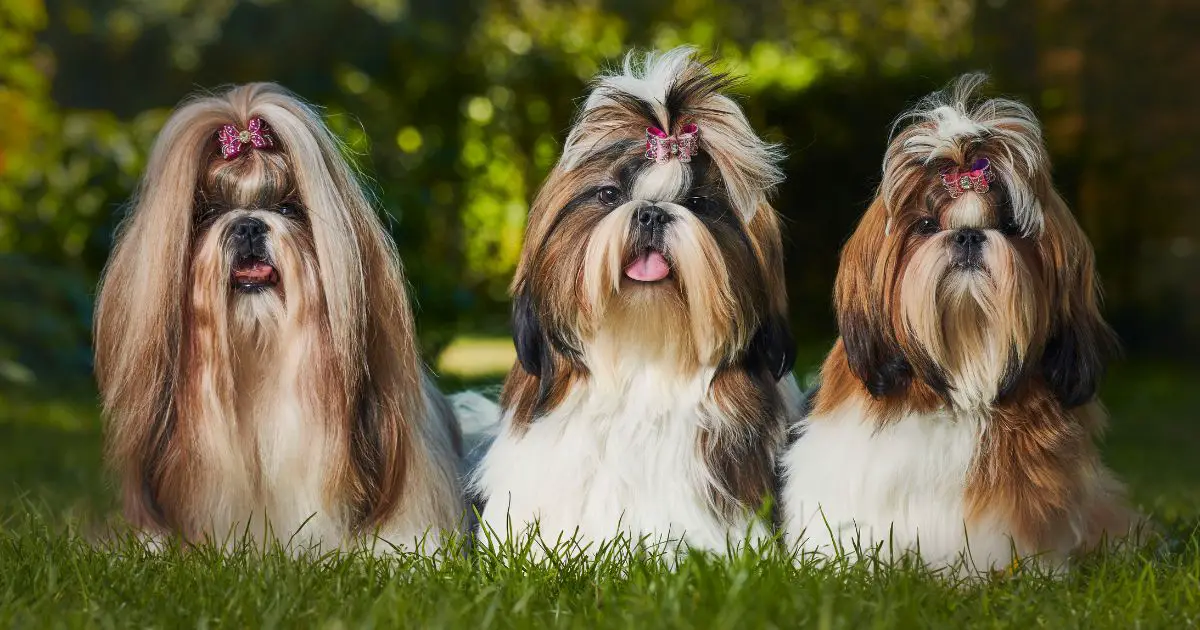
As a Shih Tzu owner or enthusiast, it’s essential to understand the different colors and patterns that these adorable dogs come in. Shih Tzu coats can have a variety of colors, including black, tan, red, blue, liver, brown, white, silver, gold, and gray. These colors can appear in different patterns and combinations, making each Shih Tzu unique.
The nose and paw pads of a Shih Tzu are usually black, but liver-colored dogs can have a brown nose and paw pads. The eye rims of a Shih Tzu are also usually black, but liver-colored dogs can have a lighter-colored eye rim.
Shih Tzus can have a variety of coat patterns, including solid colors, brindle, saddle, tuxedo, flare, and parti-colors. A solid white Shih Tzu is rare but possible, and a brindle Shih Tzu has a unique pattern of dark streaks on a lighter background. The blaze, mask, and tan markings are other patterns that can appear on a Shih Tzu’s coat.
The coat colors of a Shih Tzu can change over time, especially during the puppy stage. A Shih Tzu’s coat can also be affected by the dilution gene, which can lighten the coat color. For example, a black Shih Tzu with the dilution gene can have a blue coat, and a red Shih Tzu with the dilution gene can have a cream-colored coat.
Shih Tzus can also have blue eyes, which is a rare but stunning feature. However, blue eyes can be a sign of deafness in dogs, so it’s essential to have your Shih Tzu’s hearing checked if they have blue eyes.
In summary, Shih Tzus come in a variety of colors, patterns, and combinations, making each dog unique. Understanding the different coat colors and patterns can help you appreciate the beauty of these adorable dogs even more.
Shih Tzu Color Patterns
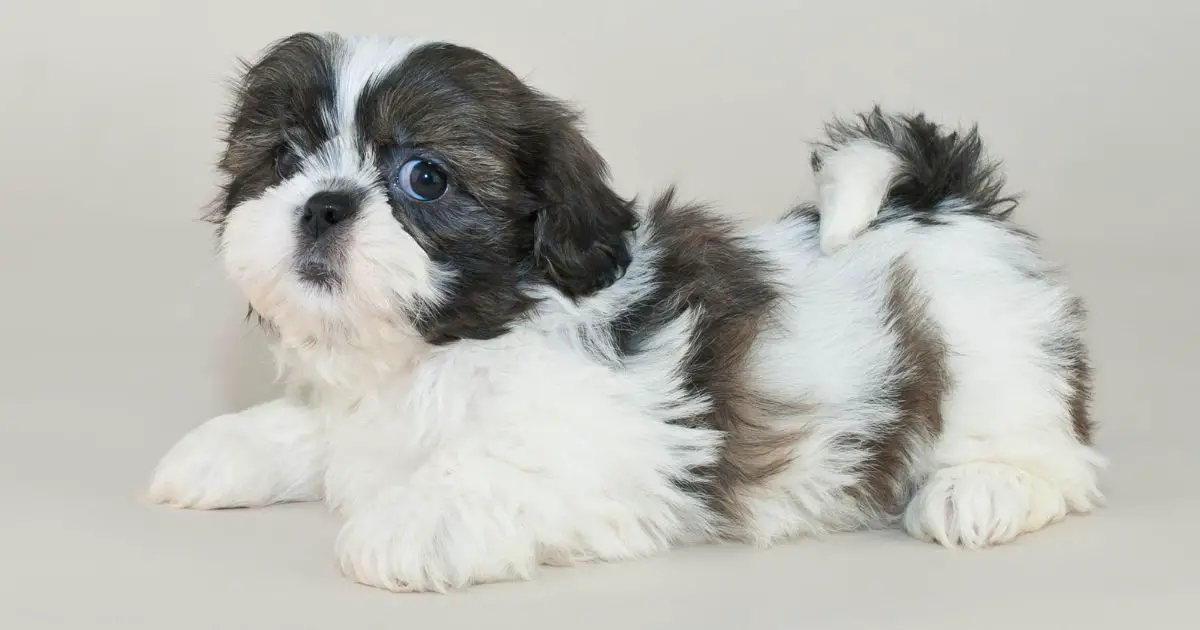
Shih Tzus come in a variety of colors and patterns, making them a beloved breed among dog lovers. In this section, we will explore some of the most common Shih Tzu color patterns.
Solid Colors
Solid colors are rare in Shih Tzus, but they do exist. The most common solid color is black, followed by white. However, it’s more common to see mostly black or white dogs with small splotches of color elsewhere.
Parti-Color
Parti-color Shih Tzus have a white base coat with patches of another color. The patches can be any color, including black, brown, red, and gold. Parti-color Shih Tzus can have a variety of patterns, including:
- Tuxedo: A white coat with black patches around the neck and body, resembling a tuxedo.
- Saddle: A white coat with a colored patch on the back, resembling a saddle.
- Flare: A white coat with colored patches on the legs and tail, resembling a flare.
- Parti: A coat with patches of two or more colors, creating a unique pattern.
Brindle
Brindle Shih Tzus have a base color with darker stripes, giving them a tiger-like appearance. The stripes can be any color, including black, brown, and gold. Brindle Shih Tzus can also have a variety of patterns, including:
- Brindle pattern: A coat with a base color and darker stripes.
- Tri-colored: A coat with three colors, including a base color, darker stripes, and a white patch on the chest or feet.
Mask, Collar, and Shawl
Mask, collar, and shawl refer to the distribution of color on a Shih Tzu’s face and body. A mask refers to a darker color around the eyes and nose, resembling a mask. A collar refers to a darker color around the neck, resembling a collar. A shawl refers to a darker color around the shoulders and back, resembling a shawl.
In conclusion, Shih Tzu color patterns are diverse and unique, making them a popular breed among dog lovers. Whether you prefer a solid color or a parti-color with a unique pattern, there is a Shih Tzu color pattern for everyone.
Grooming and Care Based on Color
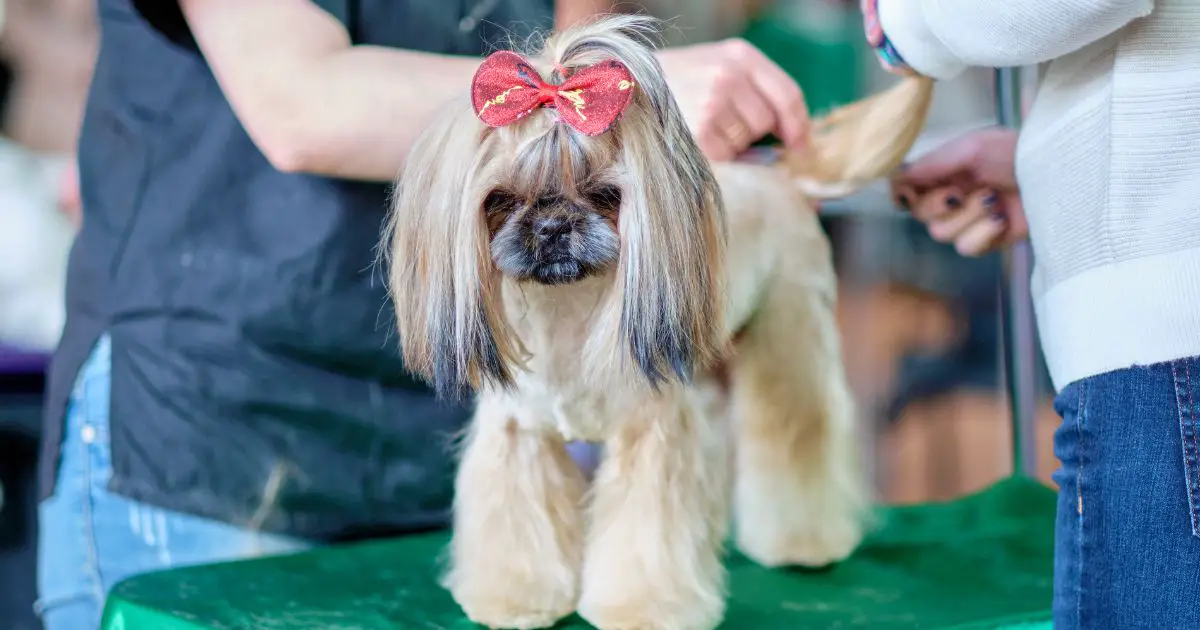
Taking care of your Shih Tzu’s coat is essential to keep them healthy and happy. The grooming and care practices you need to follow may vary based on the color of your Shih Tzu’s coat. Here are some tips for grooming and caring for your Shih Tzu based on their coat color:
Solid Colors
If your Shih Tzu has a solid color coat, you will need to brush them regularly to prevent matting. The frequency of brushing will depend on the length of their coat. If your Shih Tzu has a long coat, you may need to brush them daily. You may also want to consider a puppy cut to make grooming easier. It is essential to keep their ears clean to prevent ear infections. You should also watch out for cataracts, which are more common in solid-colored Shih Tzus.
Color Combinations
Shih Tzus with color combinations may require more maintenance than those with solid colors. You will need to brush them regularly to prevent matting, and you may also want to consider a puppy cut. You should also keep their ears clean to prevent ear infections. Color combination Shih Tzus are more prone to developing cataracts, so it is essential to keep an eye on their eye health.
Tri-Color Combinations
Shih Tzus with tri-color combinations may require more maintenance than those with solid colors. You will need to brush them regularly to prevent matting, and you may also want to consider a puppy cut. You should also keep their ears clean to prevent ear infections. Tri-color combination Shih Tzus are more prone to developing cataracts, so it is essential to keep an eye on their eye health.
Non-Standard Colors
If your Shih Tzu has a non-standard color, you will need to take extra care when grooming them. You should brush them regularly to prevent matting, and you may also want to consider a puppy cut. It is essential to keep their ears clean to prevent ear infections. Non-standard color Shih Tzus are more prone to developing cataracts, so it is crucial to monitor their eye health.
In summary, grooming and care practices for Shih Tzus vary based on their coat color. Brushing regularly, keeping their ears clean, and monitoring their eye health are essential for all Shih Tzus. By following these tips, you can ensure that your Shih Tzu stays healthy and happy.
Shih Tzu Temperament and Personality
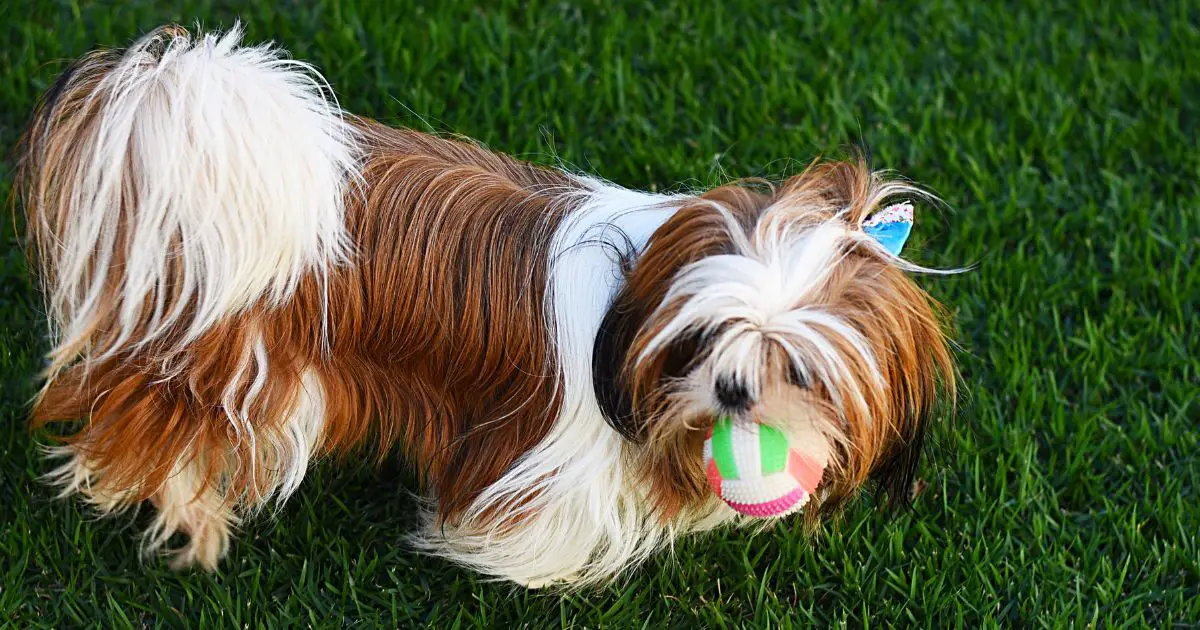
If you’re considering getting a Shih Tzu, it’s important to know about their temperament and personality. Shih Tzus are known for being affectionate dogs that love attention from their owners. They are a friendly breed and tend to get along well with people and other pets.
As a toy breed, Shih Tzus are known for being playful and energetic. They enjoy playing with toys and going for walks, but they also love to cuddle up with their owners and relax. Shih Tzus are great lap dogs and will happily spend hours snuggled up next to you.
Despite their small size, Shih Tzus are confident dogs that are not easily intimidated. They may bark at strangers, but they are not aggressive and are generally friendly with everyone they meet.
Overall, Shih Tzus make great pets for those looking for a small, affectionate dog that loves attention and is easy to train. However, it’s important to remember that every dog is different, and individual personalities can vary. If you’re considering getting a Shih Tzu, make sure you spend time with the breed to get a feel for their temperament and personality before making a decision.
Color Standards and Regulations
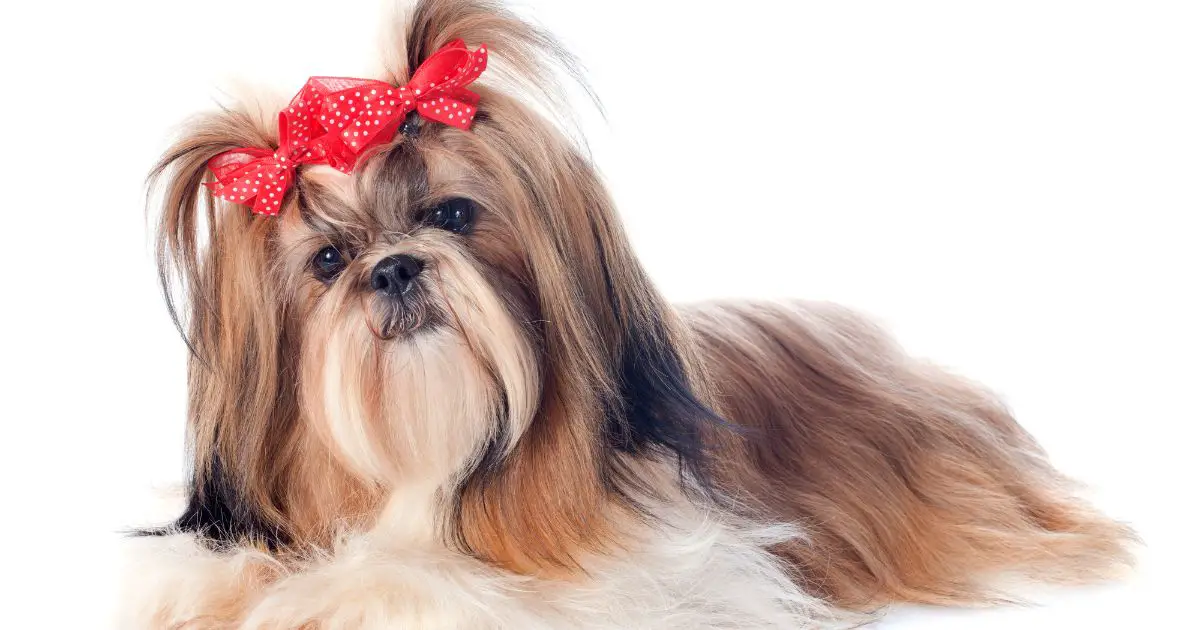
When it comes to the color standards and regulations for Shih Tzus, there are a few important entities to consider, including the American Kennel Club (AKC), Fédération Cynologique Internationale (FCI), and the United Kingdom (UK).
According to the AKC, all colors are permissible for Shih Tzus, with no preference given to any particular color. However, they do note that a white blaze on the forehead and a white tip to the tail are highly desirable in parti-colors. The AKC also provides a list of color and marking codes for all AKC recognized breeds, including the Shih Tzu.
Similarly, the FCI allows for all colors of Shih Tzus, with no preference given to any particular color. They do note that a white blaze on the forehead and a white tip to the tail are highly desirable in parti-colors.
The UK also allows for all colors of Shih Tzus, with the exception of merle. They note that a white blaze on the forehead and a white tip to the tail are highly desirable in parti-colors.
Overall, it is important to note that while all colors are permissible for Shih Tzus, certain colors and patterns may be more desirable to breeders and owners. It is also important to follow any regulations set forth by organizations such as the AKC, FCI, and UK when breeding or showing Shih Tzus.
FAQs
What are the different colors of Shih Tzu?
What is the rarest color of a Shih Tzu?
What color Shih Tzu is most popular?
How can you tell what color your Shih Tzu is?
To determine the color of your Shih Tzu, you should look at the dog’s coat. Shih Tzus have a double coat, which means they have an undercoat and an overcoat. The color of the undercoat is usually the same as the color of the dog’s skin, while the color of the overcoat is what you see on the surface. You can also consult with a veterinarian or a breeder to determine the color of your Shih Tzu.
What is the price of a lavender Shih Tzu?
The price of a lavender Shih Tzu can vary depending on the breeder and the location. However, lavender is considered a rare color for Shih Tzus, so you can expect to pay more for a lavender Shih Tzu than for a more common color.




Leave a Reply
You must be logged in to post a comment.